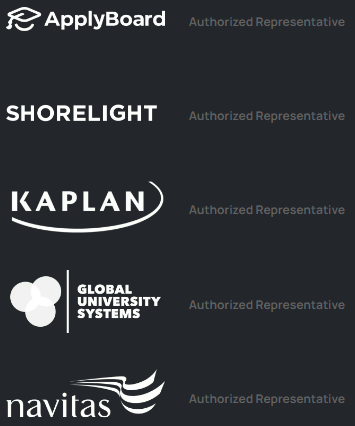AI and Cybersecurity – Integrating Artificial Intelligence (AI) and cybersecurity is transforming business administration. Businesses face increasing cyber threats in the digital era, making robust cybersecurity measures essential. AI offers advanced solutions to these challenges by enhancing threat detection, automating security processes, and ensuring real-time protection. This article delves into how AI boosts cybersecurity and fortifies business operations. By examining the synergy of AI and cybersecurity, we can understand how businesses can fortify their defenses and maintain secure, efficient operations.

1. The Role of AI in Modern Cybersecurity
Artificial Intelligence (AI) has transformed modern cybersecurity by revolutionizing threat detection, incident response, and overall security operations. AI-driven algorithms enable security systems to analyze vast amounts of data, detect patterns, and identify anomalies that may indicate potential cyber threats. For example, AI-powered intrusion detection systems can swiftly detect and mitigate unauthorized access attempts by analyzing network traffic patterns and user behavior. AI also plays a crucial role in automating threat hunting and forensic analysis, assisting cybersecurity professionals in understanding the aftermath of security incidents. Moreover, AI enhances proactive security measures by continuously learning from new data and adapting defenses to evolving cyber threats, thereby maintaining robust cybersecurity defenses in the digital landscape.
2. Predictive Analytics for Threat Detection
Predictive analytics leverages AI algorithms to proactively identify and mitigate cybersecurity threats before they materialize. By analyzing historical data and patterns, predictive analytics enables organizations to anticipate potential attacks and take preemptive measures. For instance, machine learning models can predict anomalous behavior or suspicious activities in real-time, allowing security teams to investigate and respond promptly. Predictive analytics also contributes to reducing false positives and improving overall security posture by prioritizing critical threats based on their severity and likelihood of occurrence.
By identifying patterns and trends, it enables proactive measures to mitigate risks before they materialize. This approach is crucial for maintaining robust cybersecurity in an era of increasingly sophisticated cyber-attacks.
- Pattern Recognition: Predictive models identify unusual patterns in data that may indicate potential threats.
- Real-time Monitoring: Continuous analysis of data streams allows for immediate threat detection and response.
- Risk Assessment: Predictive analytics helps assess the likelihood and impact of various threats, guiding resource allocation for optimal protection.
- Enhanced Decision-Making: By providing actionable insights, predictive analytics supports informed decision-making in cybersecurity strategies.
3. Automating Security Processes
AI-driven automation has significantly streamlined security processes by automating routine tasks such as patch management, vulnerability scanning, and incident response. Automation reduces human error, accelerates threat detection and response times, and enhances overall operational efficiency. For example, automated security orchestration and response platforms can automatically correlate security events, trigger predefined response actions, and mitigate threats without human intervention. This level of automation not only improves incident response but also allows cybersecurity teams to focus on strategic initiatives and threat-hunting activities.
4. Real-Time Threat Monitoring
Real-time threat monitoring powered by AI algorithms enables organizations to monitor and analyze network traffic, system logs, and user behavior in real time. AI-driven threat monitoring tools can detect suspicious activities, anomalies, and potential threats as they occur, providing security teams with actionable insights to respond swiftly. For instance, AI-based security information and event management (SIEM) platforms can aggregate and correlate data from multiple sources, detect abnormal behaviors, and generate real-time alerts for immediate investigation and mitigation. This real-time visibility into the security landscape strengthens proactive defense measures and enhances cybersecurity resilience.
5. Enhancing Data Privacy
AI tools safeguard data privacy by detecting anomalies and preventing unauthorized access. Enhancing data privacy involves implementing robust encryption methods, access controls, and data anonymization techniques to protect sensitive information. AI plays a crucial role in identifying potential privacy breaches through advanced monitoring and analysis of data flows.
Compliance with data privacy regulations such as GDPR and CCPA is paramount, requiring continuous updates and audits of privacy policies and practices. Additionally, training employees on data privacy best practices and raising awareness about potential risks is essential for maintaining a secure data environment.
6. AI-Driven Incident Response
Automated incident response systems powered by AI can significantly reduce the time taken to address security breaches. AI-driven incident response leverages machine learning algorithms to detect and respond to cybersecurity threats in real time. By analyzing patterns and anomalies in network traffic and user behavior, AI systems can automatically trigger responses, reducing response time and minimizing potential damages. These systems also continuously learn from past incidents, improving their accuracy and effectiveness over time.
Implementing AI-driven incident response strategies is crucial for organizations to stay ahead of evolving cyber threats and maintain a robust cybersecurity posture.
7. Adaptive Learning Systems
Adaptive learning systems powered by AI enable personalized and interactive training experiences for cybersecurity professionals. These systems use machine learning algorithms to tailor learning materials based on individual skill levels, preferences, and learning styles.
By providing targeted learning interventions and real-time feedback, adaptive learning systems enhance knowledge retention and skill development. Integrating AI-driven adaptive learning platforms into cybersecurity training programs is essential for keeping pace with evolving cyber threats and ensuring a well-trained cybersecurity workforce. Implement virtual labs and cyber range environments for hands-on practice and real-world scenario simulations.
8. Fraud Detection and Prevention
AI algorithms are highly effective in identifying fraudulent activities, especially in financial transactions. AI-driven fraud detection systems analyze vast amounts of data to detect suspicious patterns and activities indicative of fraud. By leveraging machine learning algorithms, these systems can identify fraudulent transactions, insurance claims, and payment activities in real time.
Continuous monitoring and refinement of AI models enhance fraud detection accuracy and reduce false positives. Implementing AI-powered fraud detection and prevention measures is critical for safeguarding financial assets and maintaining trust with customers.
9. Securing Remote Work Environments
Securing remote work environments involves deploying AI-driven endpoint security solutions to protect devices and data accessed outside traditional office networks. AI algorithms monitor and detect suspicious activities on remote devices, mitigating cybersecurity risks such as malware infections and unauthorized access.
Implementing multi-factor authentication, encrypted communication channels, and secure VPN connections enhances remote work security. Educating remote employees about cybersecurity best practices and providing regular security awareness training is essential for maintaining a secure remote work environment.
10. Protecting Intellectual Property
AI tools assist in safeguarding intellectual property by monitoring and detecting unauthorized access or theft. Protecting intellectual property involves using AI-based digital rights management tools to prevent unauthorized access, distribution, and reproduction of copyrighted content. Machine learning algorithms analyze digital content for copyright infringements and enforce protection measures.
Blockchain technology combined with AI enhances transparency and traceability, ensuring the authenticity and integrity of intellectual property. Implementing robust cybersecurity measures, including access controls and encryption, further strengthens intellectual property protection.
11. Risk Management
AI improves risk management by providing comprehensive threat assessments. Businesses can use AI to evaluate their cybersecurity posture and implement improvements. AI-powered risk management tools assist organizations in identifying, assessing, and mitigating cybersecurity risks. Machine learning algorithms analyze data to prioritize risks, predict potential threats, and recommend risk mitigation strategies.
Continuous monitoring and analysis of security posture enable proactive risk management and response. Implementing AI-driven risk management frameworks is crucial for organizations to minimize cybersecurity threats and protect sensitive data.
12. The Role of AI in Compliance
The role of AI in compliance is transformative, offering advanced solutions for monitoring and enforcing regulatory standards. AI systems can analyze large datasets to identify patterns and anomalies that may indicate non-compliance or fraud. This integration of AI into compliance efforts is crucial for business management programs seeking to equip leaders with the tools to ensure regulatory adherence. AI helps businesses comply with regulations by continuously monitoring security practices and generating compliance reports. This ensures adherence to legal standards.
- Automated Monitoring: AI can continuously monitor transactions and activities to detect potential compliance violations in real-time.
- Risk Assessment: AI helps in assessing risks by analyzing historical data and predicting future compliance challenges.
- Regulatory Updates: AI can keep track of changes in regulations and update compliance protocols automatically to reflect the latest requirements.
- Cost Efficiency: By automating routine compliance tasks, AI reduces the cost and effort required for manual monitoring and reporting.
13. AI and Blockchain Integration
AI and blockchain integration bring together two powerful technologies to enhance security, transparency, and efficiency in various industries. Blockchain provides a decentralized and tamper-proof ledger, while AI offers advanced data analysis and decision-making capabilities. This combination can revolutionize sectors like finance, healthcare, and supply chain management by ensuring data integrity and automating complex processes.
- Enhanced Security: AI algorithms can detect and respond to anomalies in real-time, while blockchain ensures data cannot be altered once recorded, reducing fraud and cyber threats.
- Operational Efficiency: In supply chain management, AI optimizes logistics and inventory, and blockchain provides transparency and traceability, leading to cost reductions and faster deliveries.
- Smart Contracts: AI-enhanced smart contracts can autonomously execute agreements based on real-time data analysis, making processes like insurance claims more efficient and accurate.
- Data Management: Blockchain ensures the integrity and provenance of data used by AI, which is crucial in sectors like healthcare for maintaining accurate patient records.
- Financial Services: AI provides fraud detection and risk management, while blockchain offers a secure transaction record, enhancing trust and reducing the need for intermediaries.
14. Cybersecurity in the Supply Chain
Cybersecurity in the supply chain involves implementing AI-powered solutions to assess supplier risks, monitor supply chain activities, and ensure data integrity. Machine learning algorithms analyze supplier behavior, transaction patterns, and supply chain networks for potential cyber threats.
Blockchain technology combined with AI enhances supply chain transparency, traceability, and authenticity, mitigating the risks of counterfeit products and supply chain disruptions. Integrating AI into supply chain cybersecurity enhances resilience and security across the supply chain ecosystem.
15. Training and Education
AI-driven cybersecurity training platforms offer personalized, interactive, and hands-on learning experiences for cybersecurity professionals. Machine learning algorithms track learner progress, assess competency levels, and recommend customized learning paths. Virtual labs, cyber range environments, and simulations provide practical training on real-world cybersecurity challenges. Integrating AI into training and education programs improves skill development, knowledge retention, and cybersecurity readiness.
16. Executive MBA Degrees and Cybersecurity
Executive MBA programs incorporate AI and cybersecurity modules to prepare business leaders for the digital era by educating them on cybersecurity risks, strategies, and best practices. These programs focus on the strategic implementation of AI-driven cybersecurity measures to protect organizational assets and enhance operational efficiency. Offering specialized courses on risk management, data privacy, and compliance prepares executives to address cybersecurity challenges in their organizations. Collaboration with cybersecurity experts, industry practitioners, and cybersecurity firms enhances the educational experience. MBA Programs focused on cybersecurity empower business leaders to make informed decisions and lead cybersecurity initiatives effectively.
17. Masters in Global Business and Cybersecurity
Masters in Global Business programs emphasize AI-driven cybersecurity to protect international operations. These programs highlight the global impact of cyber threats and the importance of AI in mitigating them. Integrate cybersecurity courses and specialization tracks into Global MBA programs to prepare future global business leaders with cybersecurity skills. Offer hands-on projects and internships focused on cybersecurity challenges in global business environments.
Collaborate with industry partners to provide real-world insights and experiences related to cybersecurity in global business operations. The combination of expertise in global business strategies and cybersecurity practices is highly valuable in today’s interconnected digital economy, where businesses face complex global challenges and cybersecurity threats.
18. Benefits of Integrating AI with Cybersecurity in Business Administration
Integrating AI with cybersecurity in business administration offers substantial benefits that enhance security measures and operational efficiency. AI’s advanced capabilities allow for more precise threat detection and faster response times, reducing the risk of cyber-attacks. Additionally, AI-driven solutions automate routine tasks, enabling cybersecurity professionals to focus on more strategic activities.
- Enhanced Threat Detection and Response: AI systems can identify unknown security threats and accelerate detection and response times, ensuring quicker mitigation of potential breaches and reducing the overall impact on business operations.
- Improved Vulnerability Management: AI offers better vulnerability management by continuously monitoring and analyzing network traffic to detect weaknesses before they can be exploited by cybercriminals. This proactive approach helps in maintaining robust security protocols.
- Operational Efficiency: By automating repetitive cybersecurity tasks, AI reduces the need for constant human intervention, allowing cybersecurity teams to allocate resources more effectively and focus on higher-level strategic planning.
- Lower False Positives: Advanced AI algorithms contribute to lower false positive rates, meaning genuine threats are more accurately identified without overwhelming the security team with false alarms. This improves the overall efficiency and reliability of the cybersecurity system.
- Cost Efficiency: Integrating AI in cybersecurity can lead to significant cost savings by reducing the need for manual monitoring and response efforts, as well as lowering the financial impact of successful cyberattacks.
- Future Trends: Predictions for Business Administration
The future of AI and cybersecurity in business administration promises to transform the way organizations protect their digital assets. AI’s capabilities in identifying threats and automating responses are set to revolutionize cybersecurity measures, making them more efficient and effective. As businesses increasingly rely on digital solutions, integrating AI in cybersecurity will be crucial for safeguarding sensitive information and maintaining operational integrity.
- Advanced Threat Detection: AI can analyze vast amounts of data to identify anomalies and potential threats faster and more accurately than traditional methods, helping businesses stay ahead of cyber attacks.
- Automated Incident Response: AI systems can automate responses to certain types of cyber threats, reducing response times and minimizing the damage caused by breaches.
- Proactive Risk Management: AI tools can predict and mitigate risks before they become serious issues, allowing businesses to adopt a proactive stance in their cybersecurity strategies.
- Improved Efficiency: By automating routine security tasks, AI allows cybersecurity professionals to focus on more complex and strategic aspects of security, enhancing overall efficiency.
Conclusion
The synergy between AI and cybersecurity is pivotal in fortifying business administration in the digital era. By leveraging AI’s advanced capabilities in threat detection and response, businesses can protect their digital assets, enhance operational efficiency, and ensure data integrity. Business leaders must understand and implement the integration of AI and cybersecurity to stay ahead in the competitive digital landscape. This strategic move ensures resilience against sophisticated attacks, maintains trust, and drives innovation within a secure digital environment.
Disclaimer – The views expressed in this blog are those of a third party and do not reflect the views and opinions of the SecureMyScholarship team.
Asha works as a freelance blogger who has a strong interest in language and technology. She writes non-fiction, journals, and articles for people of all ages. She also loves music, enjoys reading literature, and is a motivational speaker.
Email Id – spjainschoolofmanagement@gmail.com




